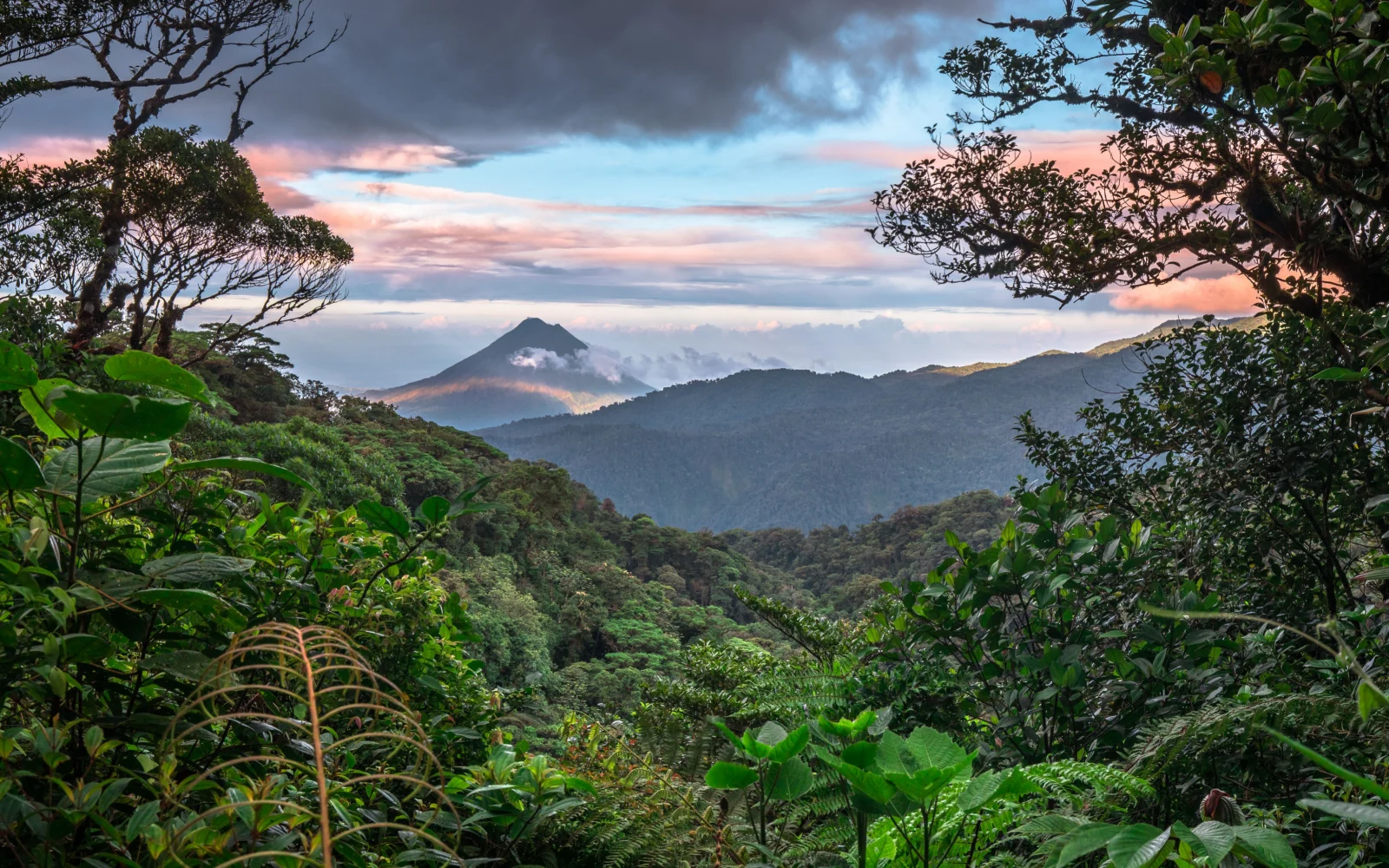Costa Rica is a beautiful Central American country that attracts over 1.7 million tourists each year. The country is popular on the backpacker circuit as well as among older travelers who like to lie on the beach in luxury and among families.
Most people visit Costa Rica for its amazing nature. The country has everything, from cloud forests in the interior, such as the Monteverde Rainforest, to beautiful beaches on two coasts where you can try out all sorts of water sports.
But while this tropical paradise might seem like the perfect place for a vacation, is Costa Rica safe to visit? Here’s our expert take.
Is Costa Rica Safe to Visit in 2025?
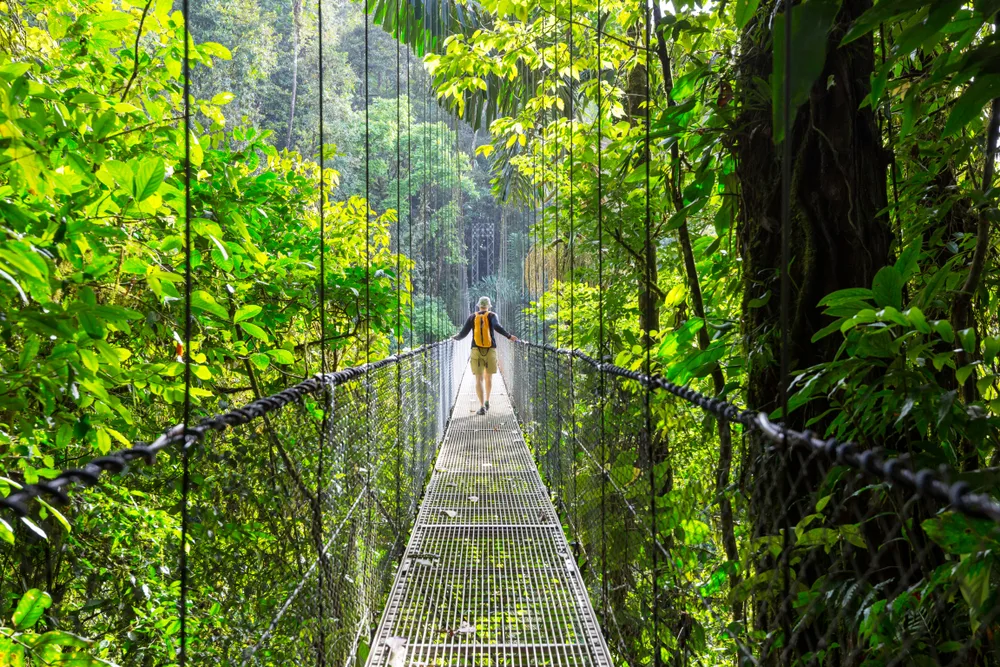
Galyna Andrushko/Shutterstock
Yes. If you want to travel to Central America, Costa Rica is probably your best bet. This country is the safest in the region.
That being said, there is still a high level of both violent and petty crime, so you should exercise caution as you travel. The advice most foreign countries give to people visiting Costa Rica is fairly uniform.
Many foreign governments have Costa Rica under a Level Two or yellow travel advisory, advising their citizens to exercise increased caution due to crime.
For example, the United States advisory reminds citizens that Costa Rica has a high crime rate. While most crimes that affect tourists are petty in nature, there have also been incidents of violent crime affecting visitors.
Common crimes you might encounter in Costa Rica include:
- Pickpocketing
- Bag snatching
- Scams
- Sexual harassment
- Drink spiking
- Sexual assault
- Armed robbery
- Express kidnapping
The list of crimes may look terrifyingly long, but those are just incidents that have occurred before — it doesn’t mean that you will encounter all of this on your trip!
As long as you take the right precautions, you can probably be very safe while in Costa Rica. Besides crime, other factors affecting your safety in Costa Rica are not that prevalent.
The country was blessed to escape the political instability that targeted many of its neighbors. In fact, it is the highest-ranked Latin American country on the Global Peace Index, at #38 (for comparison, the United States ranks much lower, at #129).
Demonstrations and strikes sometimes occur, particularly in the capital San José. Avoid joining in because any situation with a crowd of protesters might turn violent anywhere in the world and because in Costa Rica, it is illegal for foreigners to engage in political activity.
Finally, since most tourists visit Costa Rica with the goal of getting out into nature, you should probably be aware of the risks.
Be aware that Costa Rica is prone to natural disasters, including earthquakes, volcanic eruptions, landslides, and floods. Always check for potential alerts before and during your trip.
Besides researching disaster preparedness, make sure that you know how to explore nature safely. If you are going hiking in the jungle, stick to the marked trails and consider hiring a guide — you don’t want to get on the bad side of local animals, including poisonous snakes.
If you are swimming, surfing, or snorkeling, be mindful of your own skill level and know that the beaches in Costa Rica often have riptides.
Crime in Costa Rica
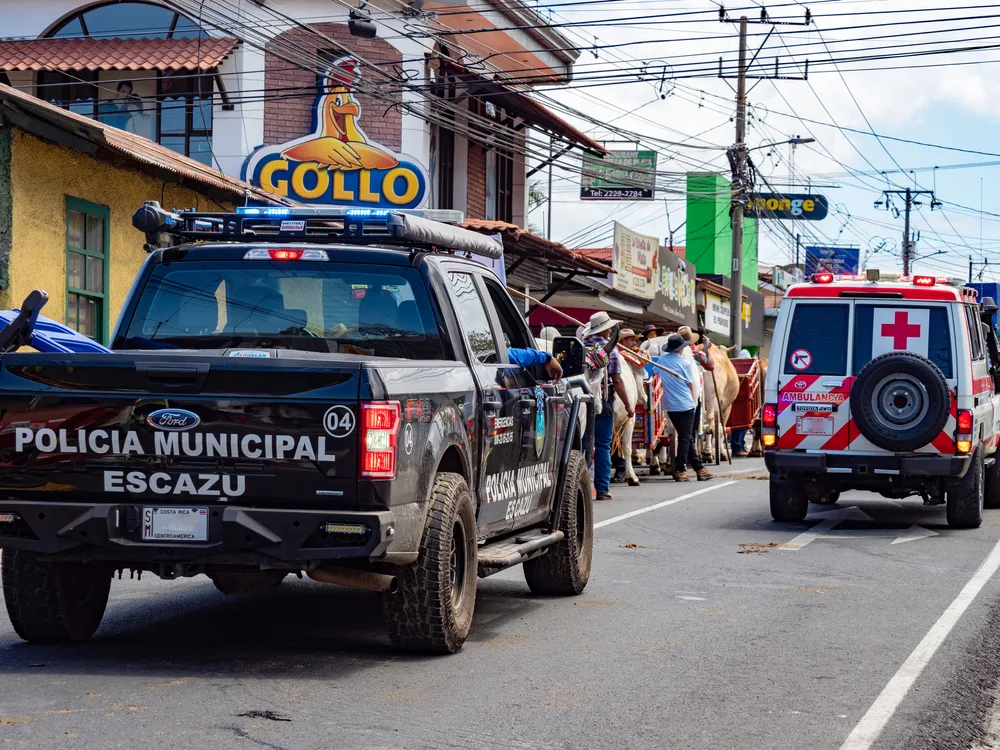
ESCAZU, COSTA RICA – MARCH 8, 2020: A police car and an ambulance accompany the ox-cart parade in San Antonio de Escazu on 8 March 2020, which takes place annually at the “Día Nacional del Boyero”/Klaus Mohr/Shutterstock
The primary reason foreign governments advise their citizens to exercise caution in Costa Rica is due to elevated levels of crime. Countries from the United States to New Zealand cite the crime rate as part of their travel advisory.
Costa Rica’s crime rate is certainly concerning. The homicide rate as of 2020 was 11.19 incidents per 100,000 people and has been increasing for years.
The homicide rate is so high the World Health Organization actually classified it as an epidemic. Levels of other violent crimes are also high.
According to Numbeo’s Cost of Living survey, residents of Costa Rica report serious concerns about property crimes, people using drugs, and other forms of property crime, such as corruption and bribery.
Overall, the level of crime is 59.45 out of 100, which is a moderate level on the site’s crime index. A major concern is the fact that crime rates are on the increase. According to Numbeo, most respondents are concerned that crime has been rising in the past three years.
This is not just public perception — crime is rising so much that the U.S. Embassy in Costa Rica issued a special advisory warning about rising crime levels, especially in the capital San José.
There are a few reasons why Costa Rica struggles so much with crime.
Like many Latin American countries, Costa Rica struggles with controlling the drug trade. Different gangs control drug trafficking, and analysts estimate that these gangs are behind most violent crime incidents.
For example, according to Costa Rican authorities, 421 of 657 homicides that occurred in the country in 2022, or 67% of the total, were part of “score-settling” between different gangs.
The changing dynamics of the drug trade have caused an increase in crime in Costa Rica. More and more gangs are using Costa Rica for storing and shipping drugs abroad, where previously, they just passed through the country.
Rising unemployment levels are also pushing more and more young people into the gang lifestyle. Sadly, many innocent people also get caught in the crossfire during gang shootouts, including children.
The country is trying to do more to control the violence. Despite the concerning crime statistics, there are a few silver linings for tourists.
Since most homicides are gang-related, as long as you avoid being on the radar of gangs, you should avoid the worst of the violent crimes. Although crime rates are elevated, the U.S. Embassy did not raise its overall alert level for Costa Rica, showing that the situation is not quite so bad.
Most violence is concentrated in the cities, so as long as you head into nature, you should be protected from the worst of it.
Petty Theft
Violent crime may grab all the headlines, but petty theft is the crime that most tourists experience.
Pickpocketing and bag snatching are common throughout Costa Rica, and criminals often target tourists because they perceive (often rightly) that they will have more valuables and fewer street smarts than the average Costa Rican.
They also target foreigners for passport theft, so keep a close eye on your ID. The Canadian government has an extensive list of popular locations for pickpockets.
Tourist locations such as viewpoints and popular attractions such as Mercado Central in San José are pickpocket hotspots. Don’t let your guard down when you get out of the big cities either, as many small towns and beaches, such as Puerto Viejo, are popular targets.
Be vigilant on public transportation, such as around bus terminals and on intercity buses, where thieves often target bags in overhead compartments.
The best defense against thieves is a good offense, so keep a close eye on your valuables at all times. Make sure that your wallet, phone, and ID are either on your person at all times or locked securely in your accommodation.
Keep purses and bags on your shoulder or in your lap, even on buses or when sitting in restaurants. Never leave your valuables unattended at the beach, as beaches are popular locations for theft (often, the thieves are even fellow travelers).
Armed Robbery
Petty theft may be the most common crime tourists encounter, but it is not the most concerning. A pickpocket just steals your valuables (and your pride), but more violent incidents where your life may be in danger, such as armed robbery, do occur in Costa Rica.
The Australian government warns citizens about the risk of violent crimes such as armed robbery. Criminals often wait for their targets at the international airports, ports, and tourist attractions.
Most armed robberies occur at night, so try not to wander around after dark. Schedule your flight to and from Costa Rica to be during the day, as the airport and roads leading to the major airports are often targeted by thieves.
ATMs are also popular locations for criminals to locate their victims. Criminals conduct express kidnappings, where they force victims to withdraw all of their money and pay their ransom on the spot, around ATMs.
Only use ATMs during the day and in a secure location such as a bank foyer. Drink spiking with methanol is a serious and often fatal problem in Costa Rica.
Criminals sometimes spike drinks to incapacitate targets for robbery and assault. Never leave drinks unattended in bars and clubs, and try to avoid spirit-based drinks as they are most likely to be made with inferior alcohol.
Avoiding Bad Areas
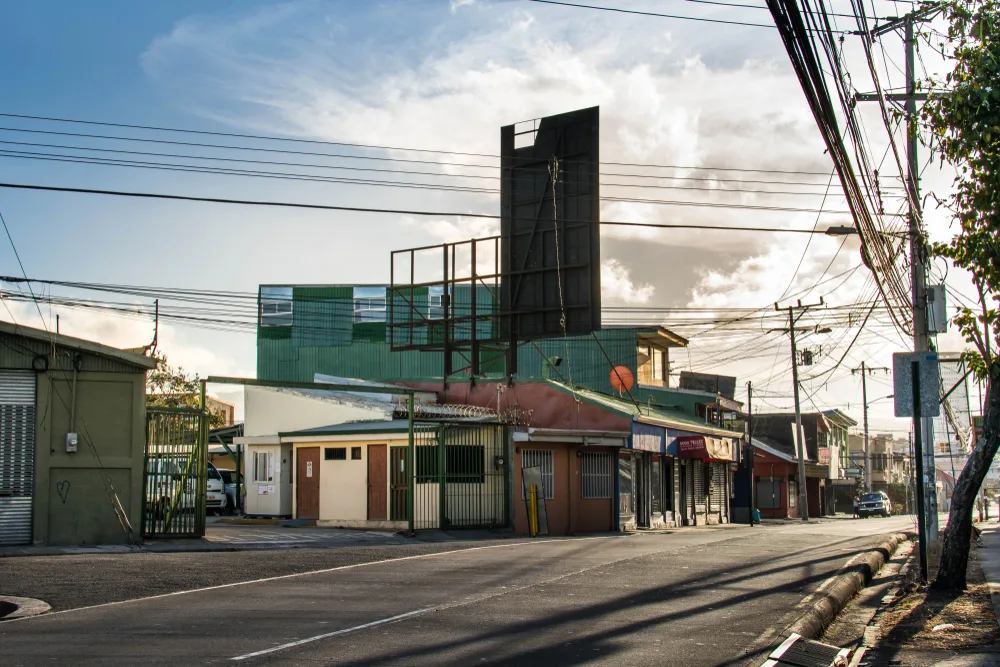
San Jose, Costa Rica. February 18, 2018. A building along an empty street in San Jose, Costa Rica/Wei Seah/Shutterstock
Avoiding bad areas can be key to your safety in Costa Rica. The capital San José has one of the highest rates of crime in the country.
Be careful around the Colo-Colo bus station, in parks, and in downtown, as those are where most petty theft incidents occur. The roads to San José International Airport have a lot of crime, including banditry, so don’t travel to the airport after dark.
Avoid certain neighborhoods with a reputation for violent crime, such as Desamparados, La Carpio, Los Guidos, and Leon XIII. Avoid the port city of Limon, as that is the center of drug cartel activity in Costa Rica.
It has a homicide rate that is five times the national average. Be careful in popular beach towns such as Puerto Viejo on the Caribbean Coast and Puntarenas on the Pacific Coast, as criminals often target those areas.
Things to Consider
Here are a few other safety tips for Costa Rica:
- Rental cars are often targeted for vehicle break-ins, so never leave your valuables unattended, even for a few minutes.
- Only take authorized taxis where the meter is running properly or agree on a price beforehand. Unauthorized taxi drivers often scam tourists or, even worse, assault and rob them.
- Another common tourist scam is the “discounted tour” scam, so beware of someone offering you an activity at a steep discount that requires you to pay a deposit.
- Be careful when driving, especially in the country, as criminals sometimes orchestrate roadblocks to rob drivers.
Frequently Asked Questions
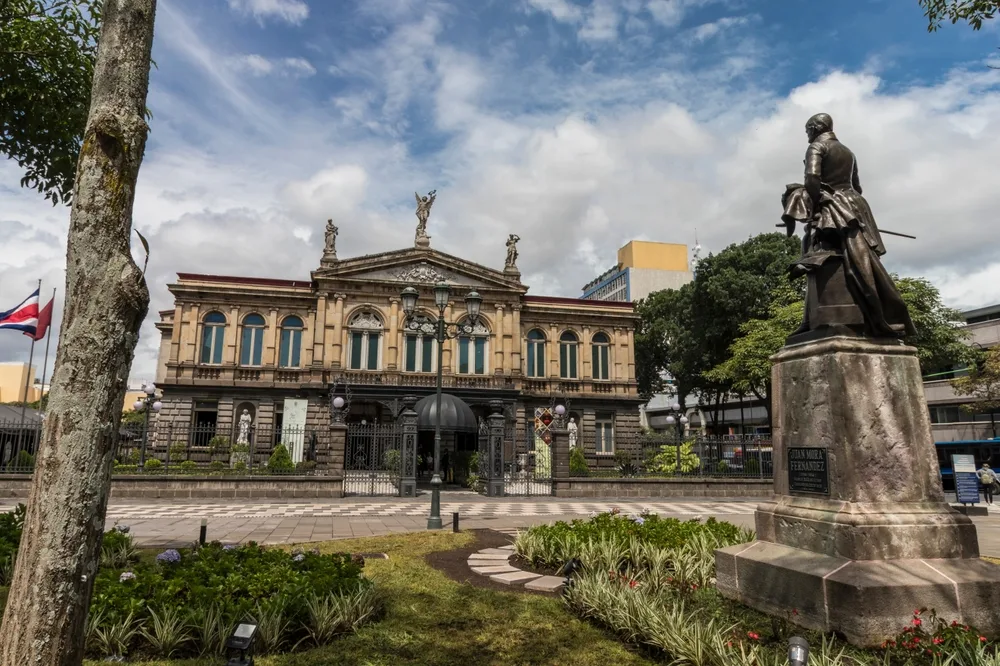
Saintdags/Shutterstock
Here are some other questions you might have about visiting Costa Rica:
Is it safe to vacation in Costa Rica right now?
Even though crime rates are up, it is still safe to vacation in Costa Rica. As long as you avoid bad areas and choose a secure place to stay, you should have a great time.
Is Costa Rica friendly to tourists?
Yes, Costa Rica is friendly to tourists. Most people are welcoming and helpful, plus the tourism infrastructure is well-developed.
Is Costa Rica safer than Mexico?
Yes, Costa Rica is much safer than Mexico. Overall, the crime rate is lower, and the violent crime rate is much lower. Tourists are also much less likely to be caught up in violent crime in Costa Rica than in Mexico.
Is Costa Rica safe for female travelers?
Yes, Costa Rica is safe for female travelers and a popular destination for solo backpackers. However, there are high levels of sexual harassment, and women will have to be careful in bars due to drink spiking.
Is Costa Rica or Panama safer?
Costa Rica and Panama are both fairly safe Central American countries. The crime rates are similar, but many tourists feel safer in Costa Rica because the tourism-related infrastructure is better.
So, Is Costa Rica Safe to Visit?
Most tourists who visit Costa Rica have a wonderful time and go home with only good memories. However, keep in mind that the country does have an elevated crime rate.
As long as you are cautious and don’t explore unfamiliar areas at night, you can avoid the worst Costa Rica can throw at you. So, with so much to see and do, what are you waiting for — book your trip today!



